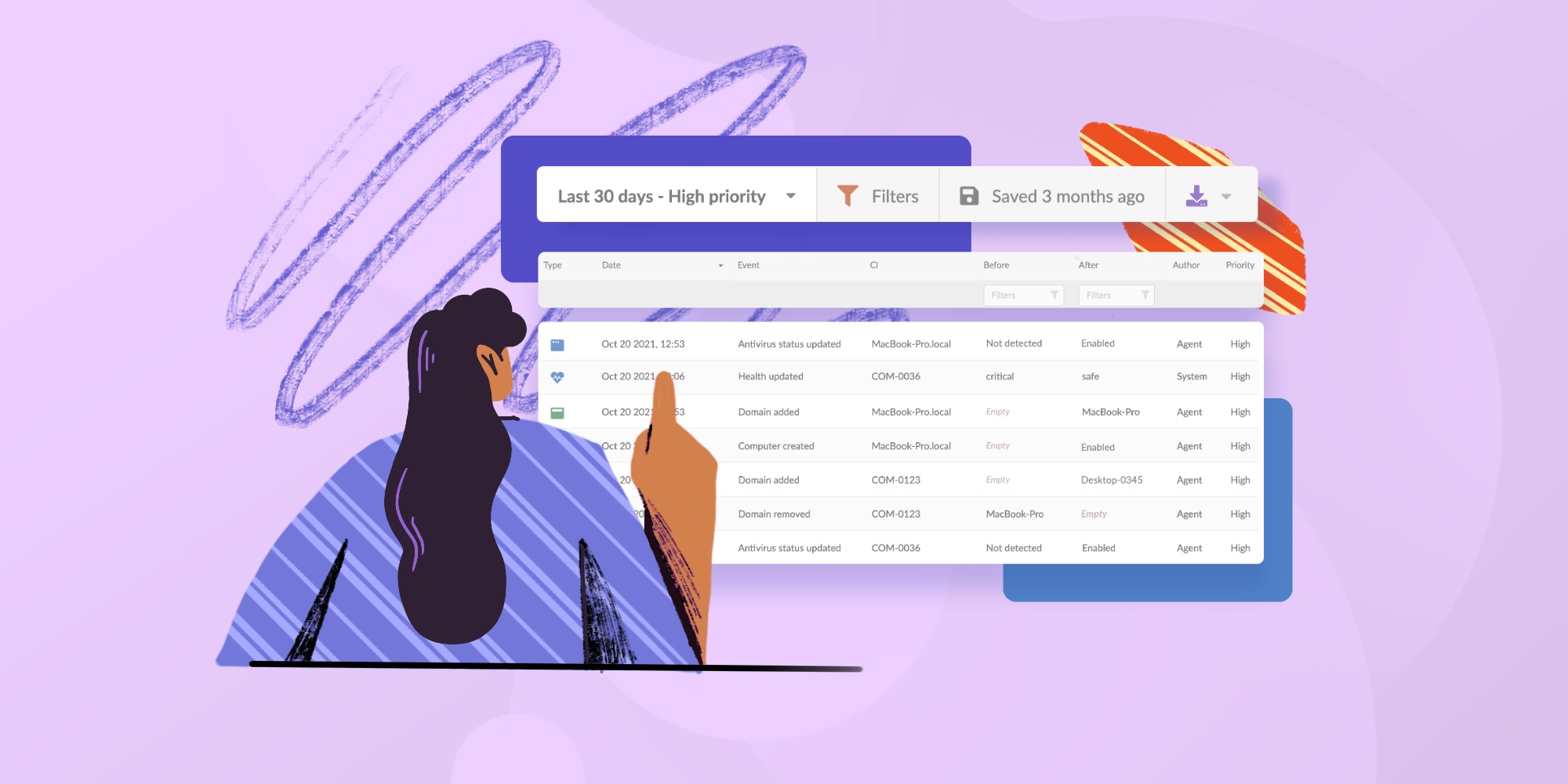Picture this: you’re troubleshooting a critical system outage, and nobody can agree on which server is causing the issue—or even where it’s located. Sound familiar? If so, your server inventory might need some attention. Without a clear and accurate view of your servers, your IT environment is like a cluttered attic—messy, inefficient, and full of potential surprises.
In this blog post, we’ll walk you through everything you need to know about server inventory: what it is, why it’s essential, and how it fits into the bigger picture of IT Service Management (ITSM) and IT Asset Management (ITAM). We’ll unpack the key elements that make a solid server inventory, explain how it connects to ITSM and ITAM practices, and share tips to get yours in top shape.
By the end, you’ll be equipped to take control of your IT landscape, ensuring your servers are optimized, secure, and always ready to power your organization’s success. Let’s get started!
What is a Server Inventory?
A server inventory is a complete and detailed list of all the servers in your IT environment—physical, virtual, and cloud-based. It’s not just about counting servers; it’s about understanding what you have, where it’s located, how it’s configured, and how it’s being used. Think of it as the backbone of your IT infrastructure, providing critical insights that help you manage resources, ensure compliance, and respond effectively to incidents.
A well-maintained server inventory isn’t just a spreadsheet of serial numbers—it’s a dynamic, living resource that ties your IT assets to your business operations. It helps you monitor hardware and software, track costs, and identify potential risks before they become major issues.
Details to include in your server inventory
Building an effective server inventory requires capturing the right details. Here’s a breakdown of the key elements to include (then we explain them in detailed):
- Hardware specifications: CPU, RAM, storage capacity, network interfaces.
- Operating System and software: OS version, installed applications, licensing information.
- Location: Physical location (data center, rack) or virtual/cloud instance details.
- Network configuration: IP addresses, MAC addresses, VLAN information.
- Ownership and responsibility: Assigned owner or team managing the server.
- Operational status: Active, idle, or decommissioned status.
- Relationships and dependencies: Connections to other assets, applications, or services.
- Lifecycle information: Procurement dates, warranties, and end-of-life timelines.

5 benefits of Server Inventory Management
Before we dive into the benefits, let’s start with the basics. A clear definition of Server Inventory Management.
What is Server Inventory Management?
There are no surprise in the following definition. Server Inventory Management (SIM) is the practice of maintaining an up-to-date and detailed record of all the servers in your IT environment. That simple. However, it’s more than just creating a list—it’s about actively tracking, organizing, and leveraging server data to optimize operations, improve decision-making, and ensure seamless service delivery.
By effectively managing your server inventory, you can unlock a range of benefits that directly impact your organization’s efficiency and success. Let’s explore the top five:
1. Improved visibility and control
Having a well-maintained server inventory provides a clear and accurate view of your IT infrastructure. It eliminates guesswork, helping you locate servers, understand their configurations, and manage them effectively. This visibility is the foundation for informed decision-making and efficient IT operations.
2. Enhanced security
With a detailed inventory, you can quickly identify outdated software, unpatched vulnerabilities, or unauthorized changes in your servers. This proactive approach reduces security risks and ensures that your environment complies with internal policies and external regulations.
3. Streamlined Incident and Problem Management
When something goes wrong, knowing exactly what you’re dealing with is half the battle. A comprehensive server inventory helps you pinpoint affected servers, understand their dependencies, and resolve incidents faster. It also aids in identifying recurring issues, leading to more effective Problem Management.

4. Cost optimization
Server Inventory Management lets you track operational costs, identify underutilized resources, and make data-driven decisions about scaling up or down. This level of insight can lead to significant cost savings and better IT budgeting.
5. Simplified compliance and audits
Audits can be stressful, but a well-documented server inventory makes them much easier. By keeping detailed records of your servers, you can quickly provide the detailed information needed to demonstrate compliance with industry standards and regulations.

Common server inventory challenges
Managing a server inventory may sound straightforward, but it comes with unique challenges that set it apart from other types of inventories. Unlike simpler assets, servers are dynamic and complex, often hosting critical workloads, interacting with other systems, and existing across physical, virtual, and cloud environments. The stakes are high—mistakes can lead to outages, security vulnerabilities, or costly inefficiencies.
In this section, we’ll explore some of the specific challenges of creating and maintaining a server inventory, including the role of dedicated inventory software, the complexities of managing relationships and dependencies, and the impact of ever-evolving technology.
1. Dynamic and complex environments
Servers are not static—they can be spun up or decommissioned rapidly, especially in virtualized or cloud environments. Keeping track of these changes in real time is one of the biggest challenges. Without an automated process, manual updates can quickly become outdated and inaccurate.
2. Interdependencies and relationships
Servers rarely operate in isolation. They host applications, interact with other servers, and rely on network configurations. Mapping and maintaining these relationships in your inventory is critical for effective ITSM, but it can be difficult to track and visualize without the right tools. An effective Configuration Management Database (CMDB) is essential for achieving comprehensive asset visibility.

3. Scattered and fragmented data
Server information is often scattered across teams, systems, and platforms. For instance, hardware details might be stored in one tool, while software licenses are tracked elsewhere. Consolidating this data into a single, coherent inventory is a significant hurdle.
4. Dedicated server inventory software
While it might be tempting to seek out dedicated server inventory software, these niche tools often fall short in meeting the broader needs of a dynamic IT environment. They can focus too narrowly on servers, creating data silos and requiring additional tools to manage other IT assets. This lack of integration can complicate workflows and hinder cross-team collaboration.
Instead, IT Asset Management (ITAM) tools provide a more comprehensive solution. With ITAM, you can manage your server inventory alongside other critical assets, such as workstations, software licenses, and network devices, all within a single platform.
5. Evolving technology and infrastructure
With the rise of hybrid environments, containers, and microservices, servers are no longer confined to physical or virtual machines. Keeping up with these technological changes and ensuring your inventory reflects your infrastructure’s complexity is a growing challenge.
Addressing these challenges requires a combination of clear processes, automated tools, and regular audits. By tackling them head-on, you can build a robust server inventory that supports your IT operations and helps your organization thrive.
Server Inventory Software: How to choose the correct tool
When it comes to managing your server inventory, you can choose a dedicated tool and get the job done effectively. However, as we already established, it might be a good idea to escalate and get an ITAM software that offers a unified solution that not only tracks servers but integrates them into a broader inventory of all IT assets.
By using ITAM software, you gain the ability to centralize your server inventory while also leveraging powerful features that enhance management, improve visibility, and optimize your IT operations. Here’s how ITAM software can take your server inventory to the next level:
1. Automated discovery and real-time updates
ITAM tools often come equipped with automated discovery capabilities that scan your network to identify all servers—physical, virtual, and cloud-based. These tools ensure your inventory stays accurate by automatically updating server details when changes occur, reducing the risk of outdated or incomplete data.
2. Integrated asset relationships
Servers don’t exist in isolation, and ITAM tools excel at mapping the relationships between servers and other assets. For example, you can link servers to the applications they host, the network devices they interact with, or the services they support. This visibility is crucial for understanding dependencies during incidents or planning changes.
3. Comprehensive Lifecycle Management
From procurement to decommissioning, ITAM software tracks every stage of a server’s lifecycle. This allows you to monitor warranty periods, plan for hardware replacements, and avoid unexpected downtime due to aging infrastructure.

4. Enhanced reporting and insights
With ITAM software, you can generate detailed reports on server performance, utilization, and costs. These insights enable better decision-making, whether it’s optimizing resource allocation, identifying underutilized servers, or planning for capacity expansions.
5. Streamlined compliance and auditing
ITAM tools simplify compliance by maintaining detailed records of your servers, including licensing, configurations, and operational status. This makes it easier to demonstrate compliance with industry standards and pass audits with confidence.
InvGate Asset Management: A Flexible ITAM Solution for Server Inventory

When it comes to building a comprehensive server inventory, InvGate Asset Management stands out as a powerful and customizable ITAM solution. With its robust Inventory Management capabilities, InvGate Asset Management allows you to track your servers alongside all your other IT assets, creating a unified view of your infrastructure. Whether your servers are physical, virtual, or cloud-based, the tool makes it easy to include them as part of your inventory using multiple discovery methods.
One of the standout features of InvGate Asset Management is its flexibility: you can create custom items tailored to your needs, including servers. This means you’re free to define how you want to catalog and track your servers, capturing all the details that matter most to your organization. Whether it’s hardware specifications, operating system details, or lifecycle milestones, the platform adapts to your processes, not the other way around.
The best part? InvGate Asset Management goes beyond servers. By integrating your server inventory into a broader ITAM strategy, you gain the ability to manage all your IT assets in one place. Here’s why that’s a game-changer:
- Unified Asset Management: Track servers, workstations, network devices, and software in a single platform.
- Improved visibility: See how your servers interact with other assets and services, helping you make informed decisions.
- Scalable strategy: As your IT environment grows, InvGate Asset Management grows with you, supporting diverse asset types.
- Cost efficiency: Streamline operations and reduce the need for multiple tools by managing everything in one system.
To sum up
Creating and maintaining a server inventory is no longer just about listing your assets—it’s about building a unified, dynamic system that provides visibility, enhances security, and optimizes operations. By leveraging the right tools, like InvGate Asset Management, you can track your servers alongside all your other IT assets, ensuring a seamless and integrated approach to managing your IT environment.
With InvGate Asset Management’s customizable and flexible features, you can build a server inventory tailored to your organization’s unique needs while scaling to meet future challenges. It’s not just about servers—it’s about creating a strategy that supports the success of your entire IT infrastructure. You can try InvGate Asset Management with our free 30-day trial.















